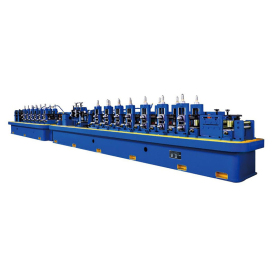[Metal Cutting Flying Saw Machine]Exploring the Benefits and Applications of Metal Cutting Flying Saw Machines in Modern Manufacturing Processes
News 2024-10-22
In the ever-evolving landscape of industrial manufacturing, precision and efficiency are crucial to maintaining a competitive edge. Among various tools that have revolutionized cutting operations, the Metal Cutting Flying Saw Machine stands out for its speed, accuracy, and versatility. Designed for a range of applications—from structural steel to intricate components—these machines have become essential in both large-scale manufacturing and custom fabrication settings.
What is a Metal Cutting Flying Saw Machine?
A Metal Cutting Flying Saw Machine is a specialized tool that employs high-speed saw blades to cut through different types of metal materials. Unlike traditional band saws or circular saws, flying saws can operate at incredible speeds while maintaining precise cutting accuracy. This technology allows for minimal waste generation, making it a cost-effective solution for many production environments.
What makes flying saws particularly unique is their functionality. These machines can cut at various angles and accommodate a range of material thicknesses. Furthermore, they are often integrated into automated production lines, which minimizes manual labor and increases throughput.
Advantages of Metal Cutting Flying Saw Machines
1. **High-Speed Operation**: One of the primary advantages of flying saw machines is their exceptional cutting speed. With advanced motor technology and optimized saw designs, these machines can achieve cuts in a fraction of the time required by conventional cutting methods.

Exploring the Benefits and Applications of Metal Cutting Flying Saw Machines in Modern Manufacturing Processes
3. **Versatility**: Metal Cutting Flying Saw Machines can handle a wide range of materials, including but not limited to steel, aluminum, and various alloys. They can also be adjusted for different cutting methods, such as straight line, angle cuts, and even complex contour designs.
4. **Reduced Material Waste**: Unlike some cutting methods that produce significant scrap or waste, flying saw machines are engineered to maximize usable material. This can lead to significant cost savings and a lower environmental impact in manufacturing processes.

Exploring the Benefits and Applications of Metal Cutting Flying Saw Machines in Modern Manufacturing Processes
Applications in Industries

Exploring the Benefits and Applications of Metal Cutting Flying Saw Machines in Modern Manufacturing Processes
In addition to these heavy industries, flying saw machines find utility in smaller-scale fabrication shops. Here, they can be used for custom metalwork, where the ability to make intricate cuts is a significant advantage. Whether preparing components for machinery, creating decorative elements, or fabricating custom fittings, flying saws can handle various tasks efficiently and effectively.
Future Trends in Metal Cutting Technology
As industries continue to embrace digital transformation and automation, the future of Metal Cutting Flying Saw Machines looks promising. Advanced technologies such as AI and machine learning are being incorporated to enhance cutting accuracy and predict maintenance needs. Furthermore, with a growing emphasis on sustainability, innovations aimed at reducing energy consumption and improving material recovery will also take center stage.
Some manufacturers are already exploring hybrid models that combine flying saw capabilities with other cutting technologies, providing even greater flexibility and efficiency. This trend will likely continue, potentially leading to a new generation of machines capable of tackling complex tasks.
Conclusion
Metal Cutting Flying Saw Machines represent a significant advancement in manufacturing technology, offering myriad benefits from speed and precision to reduced waste. Their versatility makes them suitable for a wide range of industries, and their integration into automated processes enhances efficiency and productivity. As technology continues to advance, flying saw machines will undoubtedly evolve, driving innovation and excellence in metal cutting applications for many years to come. For manufacturers aiming to improve their cutting processes, investing in this cutting-edge technology is a strategic move that pays long-term dividends.
